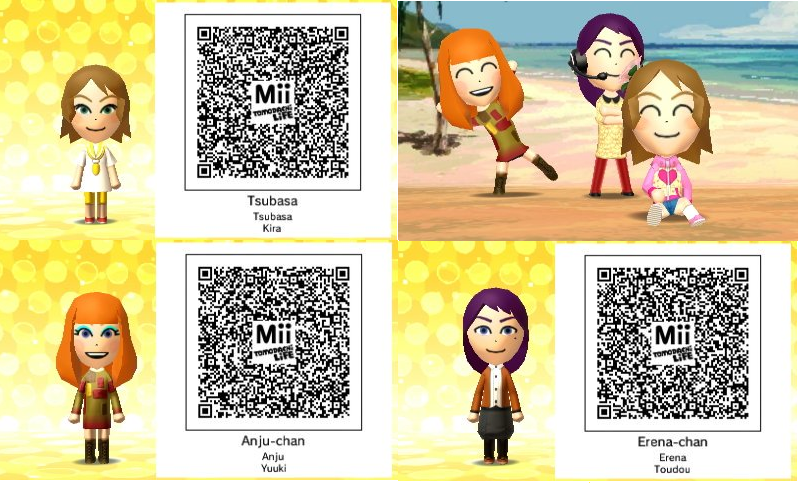

- Tomodachi life qr codes video game characters movie#
- Tomodachi life qr codes video game characters software#
Because the selection of facial features is considered by some to be limited, users are encouraged to develop caricatures of real persons instead of accurate depictions. These versions also have more options than their Wii counterpart. The features can then be fine-tuned by the user. The Mii Maker installed on the Nintendo 3DS and Wii U can use facial recognition to generate a Mii, which selects facial features based on a photograph of a person's face taken with the system's and GamePad's cameras respectively. Accessories such as hats and glasses are also available to add, and the Mii's height and build can also be adjusted. Most of the facial features can be further adjusted, including their size, position, color, and alignment. While the user can assign a gender, name, birthday, favorite color, and mingle preference to a Mii, the majority of the interface used for Mii creation focuses on the appearance of its face and head: the user is given a variety of different hairstyles, eye, nose, and mouth shapes, and other features such as facial hair or wrinkles, to select from. Mii characters are created and stored in the Mii Channel or the Mii Maker, which are pre-installed on the Wii and the Nintendo 3DS/ Wii U/ Nintendo Switch consoles respectively. The Mii Channel, the first application used to create and view Mii characters on the Wii Nintendo designer Yamashita Takayuki attributes his work on Talent Studio as having been foundational to his eventual work on the Mii, which was necessitated by the development of the game Wii Sports. This software, renamed to Manebito, was discontinued prior to release. Miyamoto showed another short film they made with this software, which was shown at E3 2002 with the name Stage Debut. Along with the Game Boy Camera, it can build an avatar maker. The next avatar implementation was for the Nintendo e-Reader and GameCube. The player can optionally utilize the Game Boy Camera and the 64DD's Capture Cassette to put their own face upon the avatar.
Tomodachi life qr codes video game characters movie#
Nintendo had produced a short film using the 64DD's Mario Artist: Talent Studio 's avatar maker, which includes clothes and a built-in movie editor. In 1999, the 64DD (a disk drive peripheral for the N64) was launched in Japan. Miyamoto commented that the concept could not be turned into a game and the concept was suspended.

There, Shigeru Miyamoto said that the personal avatar concept had originally been intended as a Famicom demo, where a user could draw a face onto an avatar.
Tomodachi life qr codes video game characters software#
Nintendo's first public debut of free-form personal avatar software was at the Game Developers Conference in 1997, during the Nintendo 64 era. U Deluxe use Miis as playable characters. Games such as Wii Sports, Wii Sports Resort, Mario Kart Wii, Mario Kart 8, Go Vacation, Super Mario Maker 2, Super Smash Bros. Miis are also used as profile pictures for Nintendo Accounts and can be used in Nintendo smart device games such as Super Mario Run, Mario Kart Tour and the now-defunct Miitomo. On the Nintendo Switch, a Mii can still be used as an account avatar, but avatars depicting various Nintendo characters are also available. On the 3DS and Wii U, user accounts are associated with a Mii as their avatar and used as the basis of the systems' social networking features, most prominently the now-defunct Miiverse. Miis can be shared and transferred between consoles, either manually or automatically with other users over the internet and local wireless communications. Miis can be created using different body, facial and clothing features, and can then be used as characters within games on the consoles, either as an avatar of a specific player (such as in the Wii series) or in some games (such as Tomodachi Life and Miitopia) portrayed as characters with their own personalities. Miis were first introduced on the Wii console in 2006 and later appeared on the 3DS, Wii U, the Switch, and various apps for smart devices. The name Mii is a portmanteau of “Wii” and “me”, referring to them typically being avatars of the players. The male and female default Miis as shown on the WiiĪ Mii ( / m iː/ MEE) is a customizable avatar used on several Nintendo video game consoles and mobile apps.


 0 kommentar(er)
0 kommentar(er)
